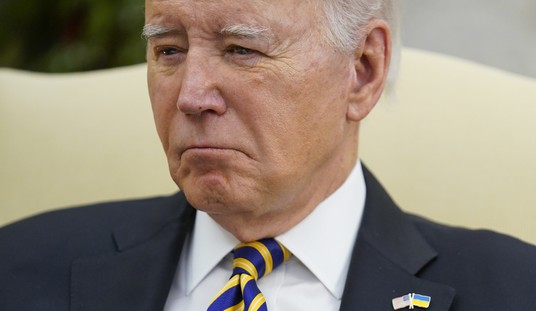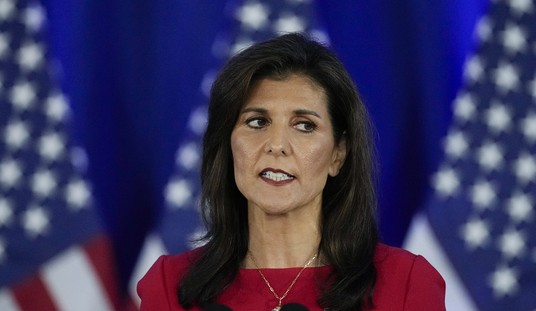Yes, not even pizza is safe from the crosshairs of Obamacare. The Obama administration’s massive federal power grab has the National Restaurant Association (NRA) – and the American Pizza Community (APC) – feeling something of buyer’s remorse for their part in lobbying for Section 4205, which is an onerous regulation that calls for restaurant chains with more than twenty locations to label their menus with nutritional information. For example, it’s going to cost each Domino’s location around $5,000 a year. There are 5,000 locations. You do the math. It’s also sucked in convenience and grocery stores into this maelstrom of government idiocy.
I had the chance to speak with American Pizza Community representative Jenny Fouracre-Petko, who works for Domino’s, to discuss the details of the third most onerous regulation in 2010, according to the Office of Management and Budget.
In all, the Affordable Care Act will cost us $2.7 trillion dollars in the first decade, with roughly 80 million man-hours spent to comply with all of the regulations. The House Ways and Means Committee puts those figures into some perspective.
So, what can be done in 79,229,503 hours?
- The Empire State building, which took 7 million man-hours to build, could be constructed 11 times.
- The Curiosity Lander could travel from Earth to Mars 13,048 times.
- Halley’s comet, seen from Earth once every 76 years, could be spotted 119 times.
Let’s get back to Domino’s. Liz Thatcher of the Competitive Enterprise Institute wrote last July that:
Domino’s CEO J. Patrick Doyle report[ed] that there are 34 million ways to order a pizza at his chain, and as a result some menu items would have calorie ranges as wide as 2,000. Also, for most customers, pizza is a shared meal, so nutritional value by the slice would be more useful than the nutritional value of an entire pizza, which is what the new rule would require Domino’s to provide. Doyle calculated that menu labeling could cost each Domino’s restaurant $1,600 to $4,700 annually.
Yet, what is Section 4205? Jenny Fouracre-Petko gave a detailed history of the regulations beginnings – and its faults.
This was part of the PPACA. And it was a piece of legislation that requires that – essentially chain restaurants – restaurants with more than twenty units nationwide put calories on their menus and menu boards…And it’s overriding a bunch of local and state regulations that required such menu labeling on menus and menu boards that were all very disparate. No two regulations really matched as far as what their requirements were – for instance, in California, you could do a poster, or in some places you could label by the slice. In some places, we had to label pizza by the whole pizza. So, this federal legislation was pre-empting a lot of local regulations that were out there that didn’t match. So if you were a national restaurant chain, it was very difficult to kind of keep up with these… [sic inaudible] So, the national legislation pre-empts all those laws, which is great. The problem for the pizza industry is that – the law was created with sort of a traditional McDonald’s or Olive Garden-serving restaurant format – and the restaurant industry is pretty diverse.
We have a lot of different formats and restaurants. For pizza delivery, like Dominos, Papa Johns, and a lot of Pizza Huts – a lot of the delivery/carry-out primary pizza restaurants – there was a lot of specifics in the rules that they were written by the FDA that were sort of a one-size fits all solution that just didn’t work for the pizza communities.
So, for instance, if Domino’s, which is where I work, we’re part of the American pizza community, the majority of our customers don’t walk into our stores, or ordering at out stores. They’re ordering remotely. They’re calling in their orders. They’re ordering online. It’s very common in the pizza industry for people to only go into the store to carry out a pizza they’ve already ordered. They rarely walking in and ordering. And so, requiring expensive menu boards to be labeled can cost up to $5,000 a year for a menu board to change all of them out. It doesn’t make a lot of sense.
As well as some of the particulars of the legislation don’t make sense. Menu labeling by the slice would make a lot more sense than menu labeling a whole pizza…it forces you to do big calorie ranges, which are just not providing customers with useful information. And so, we’re really asking, for the pizza players, we’re really asking for some specific changes. We’re not asking to get out of the law at all. We’ve been providing nutritional information to customers for a year, but we know the way to do it that’s the most accessible – and useable – by our customers.
And so, that’s our portion of this regulation that impacts us. For our peers in the restaurant and convenient store industry, they were actually never part of this patchwork of legislation out there in menu labeling to begin with, but when they created a federal legislation – it kind of sucks them into it. Even though they weren’t a part of the original idea behind this. They were sort of pulled in by the FDA. And, as a result, are being required to do menu labeling in restaurants and convenient stores, which – for the large part – 75% of what they sell is already packaged goods that are labeled.
So, it’s a pretty onerous burden for them as well to have to go through all of this extensive menu labeling on things that are often very seasonal items…are created in a situation, like a salad bar, where one day they might have apple slices, and the next day it could be orange slices. It sort of depends on what they’ve got on hand in the grocery. And so, it’s a pretty onerous legislation, piece of regulation to put on an industry that provides a fair amount of nutritional information already. And it’s a pretty big financial burden that they bear to comply with this legislation.
So, Rep. Cathy McMorris Rodgers’ legislation that she’s introduced fixes it, so that the convenient stores and the grocery stores, who were really never part of the original state and local-level regulations to begin with, can be exempted if they are primarily operating as grocery and convenient stores, and not as restaurants. And for the pizza industry, it kind of gets us out of the one-size fits all aspect of the regulations that just don’t make sense for us.
Now, what has the American Pizza Community done to make their case to Congress? Fouracre said:
We’ve [APC] done a lot actually. We’ve submitted docket comments on the two rounds of draft regulations that were out there with our viewpoints on what the impact would be on out industry. Representatives from the American Pizza Community met during the time we were allowed to with the FDA to sort of explain this regulation, and its impacts, to them in person. We’ve had members of Congress write letters on our behalf to the FDA saying this is pretty onerous, please consider this as you’re writing the regulations – and [Reps.] Cathy McMorris Rodgers and Loretta Sanchez introducing legislation that they currently have in the House, as an attempt to try to fix this as well.
Then again, wasn’t this a NRA/APC initiative? Are they complicit in this regulatory fiasco?
They did. Nope. They did. Absolutely. Because the core of it is they wanted to get rid of this patchwork of state and local regulations, which makes sense –and we support that intent. I think the problem is that because pizza is a little bit different than a McDonald’s, or a Dunkin’ Donuts, or an Olive Garden, or some of those more traditional restaurants that you might think of – we just have a few different issues in some what other restaurant chains do. And we feel like that outside the box thinking needs to be applied because restaurants are a pretty big industry. There are a lot of different formats and styles. We don’t oppose the whole idea of superseding the local and state regulations, we just feel that in the rule making; we have some issues with how the rules are coming out of the FDA.
Now, Fouracre didn’t acknowledged complicity, but did admit that they lobbied for Section 4205. She also said that it’s going to take Domino’s employees 14 million man-hours to make sure they’re following the law.









Join the conversation as a VIP Member